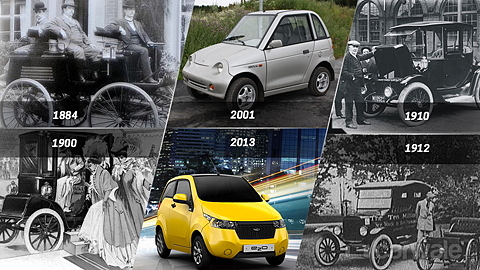
Did you know that the first electric car was productionised in 1884 when English inventor Thomas Parker beat Karl Benz and his Motorwagen by more than a year? Which means, the first real production automobile was an electric vehicle and not your regular internal combustion engine car. There is one more statistic that will surprise you – in the early 1900s, almost 38 per cent of the total cars sold in the United States of America were electric cars.
In the early days of automotive history, we had steam-engine cars, electric cars and the ICE cars as options. The steam-engine cars were cumbersome to work with. On a difficult day, it would take up to 45 minutes for the engine to crank up. Reliability was also an issue because the extreme high pressure operation being susceptible to failures. The internal combustion engine was still being developed. They needed manual cranking and driving the ICE cars was a task in itself. Anybody who has been up close to a Ford Model T would swear by it.
The electric cars, on the other hand, were easy to start and easy to drive with lesser variables to deal with. Also, the road infrastructure being limited to urban areas only, the range of the electric cars was enough to go where you wanted to. They were quiet and had less vibrations. Changing gears was not required nor did you have to deal with the exhaust fumes of the crude combustion chambers. That meant the early 1900s was the golden period for electric cars. New York had a fleet of electric cars as taxis and so did London. The English called the electric taxis ‘hummingbirds’ for the typical hum of the electric motor.
Another factor that worked in the favour of electric cars was the limited availability of petroleum products. The extraction and treatment of crude oil was expensive which meant, running gasoline cars was also expensive. With electricity reaching more and more people, viability of electric cars got a boost. Electric cars, hence, had a dream run till the mid-1910s.
In 1912, the electric starter motor for internal combustion engines was built which made cranking them very easy. As the road infrastructure spread across the country, the ICE cars with their fuel hauling capacity could do much larger distances. The discoveries of oil in America and improving extraction technology and adding to it the Middle-Eastern oil production led to a sharp decline in petroleum prices.
In the second half of the first decade of the 20th century, Ford had started mass producing cars. Suddenly, ICE cars became much more affordable with their electric counterparts costing almost twice as much. And so began the dark ages for electric cars. Until the 90s, after repeated global warnings of depleting fossil fuel stocks and ecological concerns, electric cars that had almost died a silent death were being revived. Not that there weren’t any electric vehicles built in that period – but none of them reached the production line
source”gsmarena”